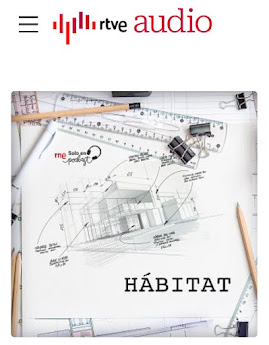El tiempo en que fue descrito el relato bíblico no era aún un tiempo proclive al empleo del lenguaje gráfico para la erección de la arquitectura, cosa que, como es bien sabido, se produjo más adelante. Pero también, por entonces, pienso, aquellos desordenados constructores se podrían haber organizado para emplear un modelo de barro (o uno BIM), como los que aparecieron en miles de enterramientos y docenas de culturas arcaicas, para rememorar las ciudades, templos y casas de los fallecidos... En todo caso, lo cierto es que, desde Babel, la soberbia humana quedó relacionada con el hecho de construir torres y dejó maltrecha toda posible buena fama de una disciplina.
A menudo se olvida que la arquitectura nace precisamente de la posibilidad de un lenguaje común. Tanto que, de hecho, podría haber sido, en algún momento, el símbolo de la posibilidad de comunicación compartida y no ese invento bienintencionado pero desabrido llamado "esperanto". Hoy, que cada lengua trata de mostrar su necesidad, cuando miles de ellas están amenazadas, o cuando unas se declaran protagonistas sobre otras, cuando la política y el lenguaje se afanan por competir como instrumento de presión y de opresión, uno piensa en las dificultades de construir aquella vieja torre bíblica. Y piensa en la belleza de contar con el más simple de los planos, por bello o pobre que sea. Porque cada plano, por humilde que sea, redime aquella condena de no encontrar un lenguaje común.
The time when the biblical tale was written was not yet receptive to the use of graphic language for the erection of architecture, a development that, as is well known, came later. But even then, I think, those disorderly builders could have got themselves organized to use a clay model (or even a BIM one), like those that appeared in thousands of burials and across dozens of archaic cultures, to commemorate the cities, temples and houses of the dead... In any case, the fact remains that, since Babel, human pride became linked to the act of building towers and dealt a heavy blow to any possible good name for a discipline.
We often forget that architecture is born precisely from the possibility of a common language. So much so that, in fact, it might once have been the emblem of shared communicative possibility rather than that well-intentioned but bland invention called “Esperanto.” Today, when every tongue tries to assert its necessity, when thousands of them are threatened, or when some declare themselves protagonists over others, when politics and language strive to compete as instruments of pressure and oppression, one thinks of the difficulties of building that old biblical tower. And one thinks of the beauty of having the simplest of drawings, however handsome or humble it may be. Because each plan, however modest, redeems that curse of never finding a common language.






























_-_left_hand_screen,%20imagen%20wikipedia.jpg)


































































































